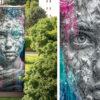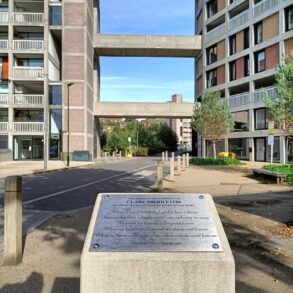
It was an act meant to challenge and provoke thought, yet the repercussions have rippled far beyond the walls of Jahangirnagar University. When President Amartya Roy and General Secretary Riddha Anindya Ganguly of the Jahangirnagar University Chhatra Union decided to paint anti-rape graffiti over the portrait of Bangabandhu Sheikh Mujibur Rahman, they ignited a firestorm of controversy, legal action, and a fierce debate over the boundaries of protest and respect for national icons. This incident, resulting in their suspension and legal charges, encapsulates a moment of profound tension between advocacy, art, and the weight of historical legacy.
The Heart of the Controversy
The crux of the matter lies in the intersection of an urgent protest against sexual violence and the perceived desecration of a revered figure’s image. The anti-rape graffiti, drawn on the new arts building’s wall, was intended to spotlight the pervasive issue of sexual violence, a noble cause that quickly became overshadowed by the outcry over the choice of canvas. The subsequent hunger strike by two Chhatra League leaders, demanding severe punishment for Roy and Ganguly, underscores the deep divisions and the volatile mix of politics, activism, and respect for national figures that this act has stirred. The decision to suspend the student leaders for a year, and the filing of a case against them, marks a pivotal moment in the university’s history, where lines between dissent and disrespect are being redrawn.
A Broader Context
While the immediate focus has been on the act itself and its direct consequences, this incident opens up broader questions about the nature of protest in spaces of learning and the sanctity accorded to historical figures. It raises critical discussions about the means of protest and the spaces deemed acceptable for such expressions. The Jahangirnagar University administration’s response, including the formation of a committee to investigate the matter and the recommendations for expulsion, reflects the complexities of governing a student body that is politically active and deeply divided on issues of national identity and respect. The backlash from various student bodies against the suspension decision highlights the fraught terrain of university politics and the challenge of balancing respect for symbols of national pride with the imperative to confront and address societal issues.
Looking Forward
As the legal proceedings against Roy and Ganguly unfold, the Jahangirnagar University community and observers beyond its borders are left to contemplate the implications of this episode for the future of student activism, the role of art in protest, and the sanctity of national figures. The incident serves as a stark reminder of the power of symbols and the volatility inherent in acts that challenge their inviolability. It also underscores the need for dialogue and understanding in navigating the complex terrain of protest, respect, and the pursuit of justice in an increasingly polarized world. The resolution of this controversy will not only determine the fate of two student leaders but could also set precedents for how dissent is expressed and managed in educational institutions across Bangladesh and beyond.
This post was originally published on this site be sure to check out more of their content.









